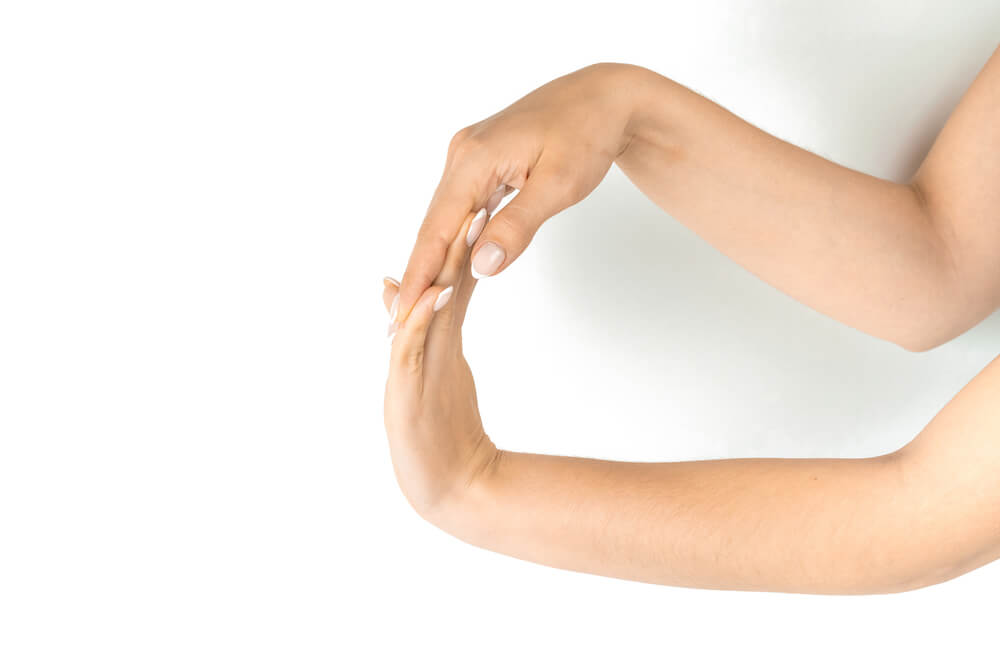Carpal tunnel syndrome is a common condition that can cause pain, numbness, and tingling in the hand and arm. It is caused by pressure on the median nerve passing through the carpal tunnel, a narrow passageway in the wrist. People who work in repetitive motions that stress the hands, arms, or shoulders may be at greater risk for developing carpal tunnel syndrome.
Therapeutic exercises can be an effective treatment for mild to moderate symptoms of carpal tunnel syndrome. Your doctor may recommend specific exercises that reduce pressure on the median nerve at your wrist, which in turn relieves symptoms of pain and discomfort associated with this condition.
Shaking
This exercise is useful when you suddenly feel numbness and tingling, especially at night. Shaking helps loosen the joints and wrist bones, which in turn reduces pressure from the median nerve.
Wrist flexor and extensor stretch
- Extend one arm in from of you with your palm facing upward
- With the help of your other hand, bend your wrist backward to an angle where your fingers are pointing to the floor.
- Hold this position for at least 15 to 20 seconds and repeat for up to ten times.
- Do this exercise in a reverse direction with your palm facing downward.
- Bend your hand upward where your fingers are pointing to the ceiling.
- Hold this for 15 to 20 seconds and repeat up to ten times.
Tendon Glide
In this exercise, you'll use your fingers and hands to perform a variety of movements. Avoid changing positions quickly and take your time to slowly and carefully move to the next position.
- Start with placing your arm on a table with your elbows bent, your wrist straight, your fingers pointing toward the ceiling with your thumb relaxed.
- Make your fingers bend at the middle knuckles so your fingertips touch the upper part of your palm, keeping your thumb in an extended position.
- Stretch your fingers to make an L shape with your hand
- Fold your fingers again and make them touch your palm, this time tucking your thumb in.
- Curl your fingers in to make a regular fist.
- Repeat this routine ten times.
- Do this up to three times a day.
Nerve Glide
Just as in the previous exercise, you will need to move through a series of positions. Do this in a careful and slow manner to prevent strain.
- Make a fist that is facing you with your elbows bent and your wrist in a neutral position.
- Straighten your fingers with the thumb so they are all pointing upward, keeping the wrist in a neutral position.
- Slowly point your fingers away from you by bending your wrist, keeping your thumb still tucked to your fingers.
- Carefully extend your thumb to the side.
- Hold this position while turning your forearm away from your body.
- Using your other hand, gently pull your thumb down to stretch it a little bit further.
- Repeat this routine three to five times up to three times a day.
Wrist curl
You can perform this exercise while sitting down or standing up. You will need to use a small dumbbell or a can of beans weighing one pound.
- Grab the weights
- Flex your forearm on your sides, making them parallel to the floor in an L shape position.
- Begin with the weights facing down and your wrists in a neutral position.
- Gently bend your wrists up, then return to the neutral position.
- Repeat the routine ten times up to three times a day.
Hand squeeze
This exercise will help you have a better and stronger grip.
- Use a small rubber ball or a ball of socks
- Squeeze them while gently applying force
- Hold the position for about 15 to 20 seconds before releasing
- You can do this multiple times a day
Carpal Tunnel Syndrome is a painful condition that can lead to serious nerve damage. If you are experiencing this pain, it's important to quickly take the necessary steps towards recovery. Exercise for carpal tunnel syndrome may help with mild or moderate cases of CTS but if your symptoms worsen over time and the pain becomes unbearable, seek medical consultation as soon as possible.
Our team specializes in treating Carpal Tunnel Syndrome. If you need help with your condition, contact us at Belden Village Chiropractic and Wellness Center.
References
https://orthoinfo.aaos.org/
https://myhealth.alberta.ca/
https://www.webmd.com/
https://www.healthline.com/
